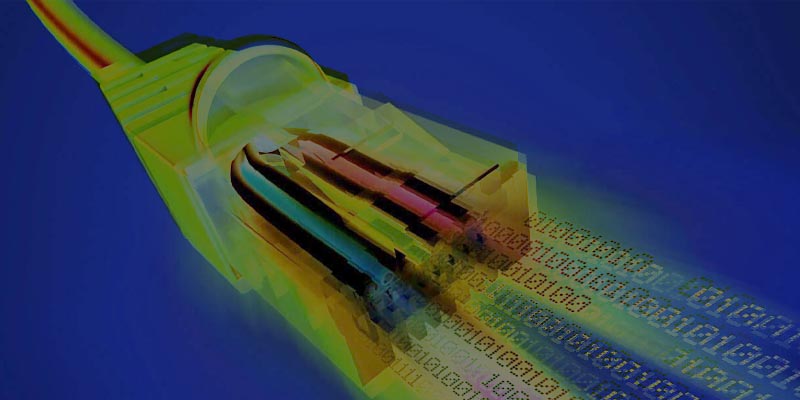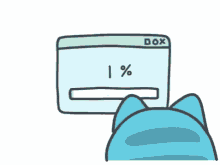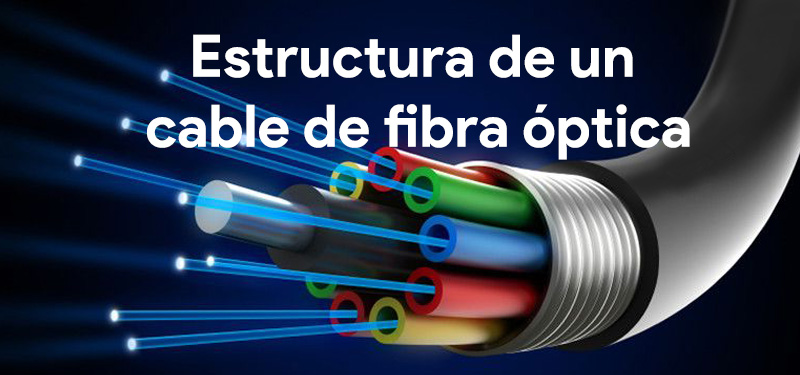
Index:
UPDATED ✅ Do you want to know about the different types of FTTH and how fast they can be? ⭐ ENTER HERE ⭐ and discover everything about it ✅ EASY and FAST ✅
In many countries fiber optics are usedsince it is the most advanced type of wiring for sending information in the form of pulses of lightallowing us a good speed in the exchange of information.
optical fibers They are glass threads that transform information in beams of light traveling at high speed. They have different uses, both daily and industrial, but later we will delve into them. more of this concept and the different types that we can find.
As we know not all countries have the same bandwidth speeds, as well as not all people. These, vary depending on the area and the type of fiber used. To find out what our browsing speed is, we invite you to use our speed test.
What is fiber optics and what is this type of Internet connection for?
optical fibers They are threads of glass or molten plastic that transmit pulses of laser light over long distances., which carry with them packets of computer data. This is the most advanced technology for be able to transmit information by means of cables.

We know that cables mostly have copper or metal wires, but the difference is that when information is transmitted through metal or copper over long distances, the packets they arrive incompletebecause this material generates many losses.
Fiber optics accurately transmit the number of data packets without generating any loss because it is transmitted in the form of light. This way of transmitting information is much safer than any other, because it is not affected by electromagnetic interference.
What is fiber optics used for?
The hypothesis of creating an optical fiber, is sending information over long distances with such a minimal level of information loss that is considered fully effective in that sense.
This technology has many uses, both industrial and daily and work. This is used as a material for networks and communications, sensors (used to determine a minimum or maximum point of temperature, pressure, or light levels), and also as a lighting material.
What are the main types of fiber and how is each one different?
Fibers are divided into different types whose functions are different. Here we show you what they are and their functions:
asymmetric fiber
asymmetric fiber It is the one that offers a better speed in loading than downloading data. It was designed so that netizens see the information on the network, that is, they are viewers and not providers of content to the web. East It is the most widely used system in the world. since asymmetric fiber is considered to be a signal for commercial use.
Although many users do not like an asymmetric connection, we can tell you that this type of fiber has many advantages that trap people to them. We can say that one of them and the most important is the economic, and this is because as the demand grows every day for the symmetrical fiber this has had to set offers on its prices.
dark fiber
this fiber it is very little used since its function as such is not to directly offer a connection service. In most fiber connections where they have a route of kilometers, they use this type of fiber as normal fiber supportsince this will be the responsible for sending the information when the main one fails or is collapsed, and it is also used to punctually communicate data centers with areas where backups are made.
Many of the carriers enter these types of fibers, Although in most cases they are not used, but they do so with the intention of maintain a stable and prepared system when the flow of connected users grows, always offering a good speed. They are also implemented to offer future network sales or resales to other operators.
these wires are used more and more for private companies or administration that want to have an instant and very fluid network between their offices.
Many telephone companies use fiber optics because every day there is more demand for them. So they are using the dark fiber to be able to give a good connection and distribution information between different points.
symmetric fiber
This type of fiber It is used to supplant the service offered by asymmetric fiber optics., whose main characteristic is to offer the same upload and download speed. In other words, we can say that whenever we upload a file, it will have the same speed as when we download it.
Although the download speed will sometimes be less than the asymmetric connectionbut it’s still a good choice for most users.
Their prices may vary, since the demand for this type of fiber grows more every day, so we can also find different offers depending of the utilities that we are going to give.
How fast can FTTH be? Is it the fastest in Spain?
FTTH comes from its acronym in English Fiber To The Home whose translation is fiber to the house or fiber to the home, which It is based on using fiber optic cables, where it is installed to provide services such as Triple Play: telephony, broadband Internet and television.
This technology represents one of the fastest navigations in terms of connections. Thanks to the fact that it uses fiber optics to connect two ends, its data shipments They travel at the speed of light pulses.
In Spain it is one of the fastest broadband connections since various operators such as Jazztel use it, offering an exchange speed of 300Mbps packets, and others like Adamo offer a speed of 1 Gbps with very limited coverage.
In what position is Spain?
From its beginnings until now this technology has had many advances so according to the latest studies, carried out by Cable, where it analyzed the Internet speed of 200 countries from its average broadband speed in megabits per second. This study was conducted from June 2017 to May 2018.
Based on this analysis we can see that broadband speed varies from one country to another, and that it can also vary according to the area where each person lives in a given country.

From that study it was determined that one of the countries with the highest speed in Internet connection is Singaporehaving a result average 60.39 megabits per second. The second place was given to Sweden with a speed 46Mbps and third place to Denmark with a speed of 43.99 Mbps.
position number five was awarded to Norway with a speed 40.12Mbps and Romania (6th place) with 38.6Mbps. granting himself the ranked number 16 worldwide to Spain with a speed of 27.19 Mbps, and the USA in position 20 having 25.86 Mbps.
What is the speed of my navigation?
There are studies that can be done individually to know what is the internet connection speed. to be able to know what is the speed you count to navigate, go to the following link: speed test
Types of fiber optic cables What are the main cables?
optical fibers show different behaviors when there is a beam of light inside them, called propagation. Depending on how this propagation is made, the optical fibers are divided into:
multimode fiber
This is the type of fiber that causes light to circulate through it, reaching more than one way or path. In other words not everyone can arrive at the same time, so it is supposed that due to its name it must have over two thousand modes of propagation of the light.

Multimode fibers commonly are used to connect two points with little distance between each other, used for a maximum distance of 2 kmis characterized by being easy to design and very economical.
The core of this type of fiber has a good refractive index, but despite being higher is of the same order of magnitude as the cladding. Due to this and its large size it is easier to connect and has a higher component tolerance of lower precision.
This fiber has different cores with different refractive indices, so we can divide it into two types:
- stepped index: It is so named because it has a constant refractive index throughout the cylindrical section with a high modal dispersion.
- Gradual index: The index of this type is not constant and has a lower modal dispersion, and its core is made up of two different materials.
single mode fiber
As the name implies it is a fiber optic in which only spread light modewhich is achieved by reducing the diameter of the fiber core to a certain size that allows an optimal propagation mode.
your way transmission is parallel to the fiber axis. Unlike multimode fiber, this fiber allows reach great distanceswith good communication and capable of transmitting an enormous rate of information.
Types of connectors for FTTH What are they and how much do they influence the speed of the network?
We can find different types of fiber connectorsbut these vary depending on the country or continent, since some are of uses more common than others.
Next we will show which are the most used connectors:
E2000 connector
This is the LSH connector (Europe 2000) push-pull type. Its use is very common since it has a cover that protects the face of the splint when it is not attached.
this is made of a thermoformed plastic material (UL 94-V0), with a 2.5mm diameter zirconia ferrule.
MTJ connector
this is a connector type RJ-45 that supports duplex fiber, Gigabit Ethernet, Video and CATV, polarized telecom networks. We can find it available in singlemode and multimode.
This type of connector has a great advantage which is the cost reduction in passive hardware, as long as an installation is carried out, since it contains two fibers in its ferrule that doubles the density within any distributor.
ST connector
Mostly we can find this type of connector in large data networks, and can be found in multimode and singlemode type. This connector is of the pre-assembled type considered as such due to its structure.
FC connector
This type of connector offers a good fixed tuning guidea for the APC model, structured with a removable tuning ring and variables in six positions. We can find it for the connectorization version over 900μ channelsall with APC or UPC terminals.
SC-connector
It is a push-pull type connector.of plastic material with a zirconia ferrule 2.5mm diameter. It is very easy to remove it from the trailer given its shape to enter in a straight line.
It is mostly used as an industrial link, for telephone exchanges, CATV operators, and it is the output interface of the most common 10/100 media converters.
DIN connector
This connect is governed under DIN 47256 CECC 86 135-801 (UPC version) and 135-802 (APC versions).
LC-connector
This LC connector (Line of Connectors), having as size half of the connectors like SC, ST, FC and others. It is mostly used as a coupler in a patch panel, available in singlemode or multimode, simplex or duplex, PC or APC versions.
It is a complete connector. ideal for high-speed networks, voice, telecommunications and for centrals on high-density racks and Data Centers.
MU connector
The MU connectors have wide application in kind of data, voice, telephony, DWDM. This is a pushpull system, compliant with UL94 V-0 standards, with a high quality rating.
It is structured under JIS C 5983 F14 and IEC61754-6 standards, CECC IEEEcounting on an excellent precision in its splint that allows to obtain very low insertion values.
FSMA 905 Connector
is a connector 100N pull resistant with many profitability cycles, designed in one piece, compatible with IEC 61754-22 and can be found in versions for fibers whose cleadding is 125 microns, for fiber from 140 up to 1 mm. Its physical characteristics, is that it has a bronze external nut nickel plated or stainless steel.
FDDI connector: FIBER DISTRIBUTED DATA INTERFACE
This is the most used connector in some countries to establish data networks, since it has with an FDDI interface. IL: . This distributed fiber data interface was designed to meet the requirements of individual high-speed networksand high-speed connections.
ESCON connector
This is the connector was developed by IBM, has two ferrules of 2.55 mm. It is used for network structures that support up to 200Mbpsof the full duplex type with two ceramic ferrules and an assembly of the crossed type patchcords.
MPO MTP Connector
Finally we bring this connector, whose differences is that the MPO is male and MTP is female. The male connector has two alignment pins while the female connector has two alignment holes. This is widely used for fixed connections where low losses are required.
networks